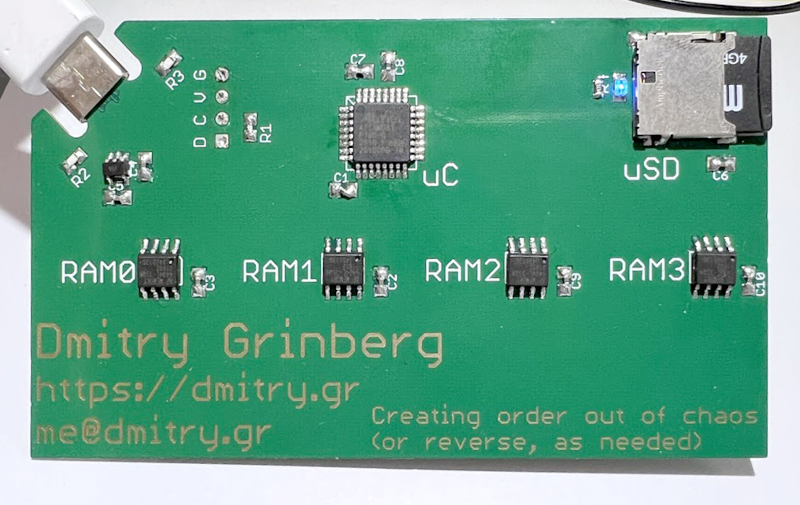It is a sign of the times that one of [Dmitry’s] design criteria for his new Linux on a business card is to use parts you can actually find during the current component shortage. The resulting board uses a ATSAMD21 chip and emulates a MIPS machine in order to boot Linux.
We like that in addition to the build details, [Dmitry] outlines a lot of the reasons for his decisions. There’s also a a fair amount of detail about how the whole system actually works. For example, by using a 0.8 mm PCB, the board can accept a USB-C cable with no additional connector. There is also a great explanation of the MIPS MMU and don’t forget that MIPS begat RISC-V, so many of the MIPS core details will apply to RISC-V as well (but not the MMU). You’ll also find some critiques of the ATSAMD21’s DMA system. It seems to save chip real estate, the DMA system stores configuration data in user memory which it has to load and unload every time you switch channels.
By the end of the post you get the feeling this may be [Dimitry]’s last ATSAMD21 project. But we have to admit, it seems to have come out great. This isn’t the first business card Linux build we’ve seen. This one sure reminded us of a MIDI controller card we once saw.
















This is the second “Microcontroller emulating another CPU to run linux” I’ve seen today.
When will we get a rb pico emulating a rb pi (which is business card sized!)?
The USB-C connector rocks.
That’s a shame! Hopefully it can be improved so provide a steady connection.
B^)
But Dmitry is the one who did the original Linux on AVR in 2012 mentioned in the other article :-)
And BTW, the current owners of the MIPS IP are converting their MIPS core to be RISC-V.
According t them, the architectures are similar enough that this can be done with little effort.
https://riscv.org/blog/2022/05/mips-pivots-to-risc-v-with-best-in-class-performance-and-scalability-mips/#:~:text=%E2%80%9CMIPS%20has%20long%20been%20used,designed%20for%20flexibility%20and%20scalability.%E2%80%9D
“When will we get a rb pico emulating a rb pi (which is business card sized!)?”
When you make one. Get cracking :-)
My two-cents is to flip the chips upside down and recess them in the PCB. That might make the board even slimmer with less ‘humps’. But I obviously love the project!
My first thought as well!
I’ll never understand why people don’t put cool fonts or designs on visible PCBS. evan altium allows you to use windows fonts….
https://m.media-amazon.com/images/I/716myYWWmJL._AC_SL1500_.jpg
Comic sans it is then.
And the most gaudy silkscreen and pcb color combination possible.
What you need is Comic Papyrus, which was renamed to “Comic Parchment.” He wanted to join the two most “beloved” fonts together so you can choose both!
It depends on the licensing of the fonts. For example using a font on a website is different license than using a font for print. This is the case for the extended OCR-A font I bought.
Fantastic ! If you are going to read one article today, read the original linked site. This is such a cool piece of work !
The whole site? A link would help. 😎
Bad idea. Who would want to plug in a strangers an device?
It’s a ~glory~ plug
Better than to plug device into a stranger.
Jokes aside, cool project.
I guess the idea is that you are familiar with the person that’s giving you the USB enabled card therefore there is already a higher level of trust than the random dude that says “hey go plug this into you work PC!”. Also it’s got his name all over it since, you know, it’s his business card. Wouldn’t be a great impression if his business card broke your computer. Pretty sure he’s being careful and only leaving the malware on the thumb drives he dropped in your parking lot.
No LM555 – minor fail.
C’mon, we’re a fifth of the way through the 21st Century, needs a quad core 558 at least.
I can’t believe that they prefer Paul Allen’s card to mine.
Buy wil IT run Doom?